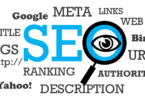In today’s fast-paced business environment, integrating different systems and software is crucial for seamless operations and increased efficiency. Integration plays a significant role in the relationship between payroll management software and HR systems. By integrating these two essential components, organisations can streamline processes, reduce errors, and empower their HR teams. This article will explore the benefits and challenges of integrating payroll software with HR systems and how businesses can make the integration process easy and effective.
Understanding the Benefits of Integration
Data Accuracy and Consistency
Integrating payroll and HR systems eliminates the need for manual data entry and reduces the risk of errors. When employee data is entered into one system, it seamlessly flows into the other, ensuring accuracy and consistency across both platforms. This integration ensures that information such as employee profiles, attendance, leaves, and benefits are automatically synchronised, reducing the chances of discrepancies.
Time and Cost Savings
Automating data transfer between payroll and HR systems saves time and reduces administrative costs. With integration, HR professionals no longer have to spend valuable time manually inputting employee data or reconciling system discrepancies. This allows them to focus on strategic HR initiatives and enhance overall productivity.
Streamlined Processes
The integration enables automating key payroll processes such as payroll calculations, tax deductions, and direct deposit. HR professionals can access and manage all payroll-related information from a centralised system, eliminating the need to switch between multiple platforms. This streamlined approach enhances efficiency and reduces the likelihood of errors.
Making Integration Easy and Effective
Clearly Define Objectives
Clearly defining the objectives involves identifying specific outcomes and benefits that integration should deliver. For example, your objectives may include streamlining payroll processes, reducing manual data entry, improving data accuracy, or enhancing reporting capabilities. By defining clear objectives, you provide a roadmap for the integration project, ensuring all stakeholders are aligned towards common goals.
Choose Compatible Systems
Carefully evaluate the integration capabilities of both systems and confirm that they are designed to work together seamlessly. Look for software vendors who offer pre-built integration solutions or have a track record of successful integrations with HR systems. Compatibility issues can lead to complications and hinder the smooth data flow between systems, so a thorough compatibility assessment is vital.
Collaborate with Vendors
Discuss your integration requirements, objectives, and any specific challenges you anticipate. The vendors can provide valuable insights, recommendations, and guidance based on their expertise and experience. They can also assist with the technical aspects of the integration, ensuring that the necessary configurations and settings are properly implemented.
Plan and Test Integration
The plan should outline the steps and activities required to integrate the payroll management software and HR systems effectively. This includes mapping data fields between systems, configuring integration settings, and establishing data flow protocols. Thoroughly test the integration process in a controlled environment to identify and resolve any potential issues before going live. Testing should encompass various scenarios, including data transfer, system synchronisation, and error handling. Regular communication and collaboration between the integration team and relevant stakeholders are essential during this phase.
Provide Training and Support
Conduct training sessions to familiarise them with the integrated system and its functionalities. Ensure they understand how to navigate the new system, access relevant information, and utilise the integrated features effectively. Address any questions or concerns and provide ongoing support as they adapt to the integrated system. Empowering HR teams with the necessary knowledge and support increases the chances of successful integration adoption and usage.
Conclusion
Integrating payroll software and HR systems is a powerful tool that can revolutionise how organisations handle payroll processes and data management and optimise the workforce. With careful planning, collaboration, and ongoing refinement, businesses can make integration easy and effective, unlocking the full potential of their HR and payroll systems to drive success and growth.








Leave a Comment
You must be logged in to post a comment.